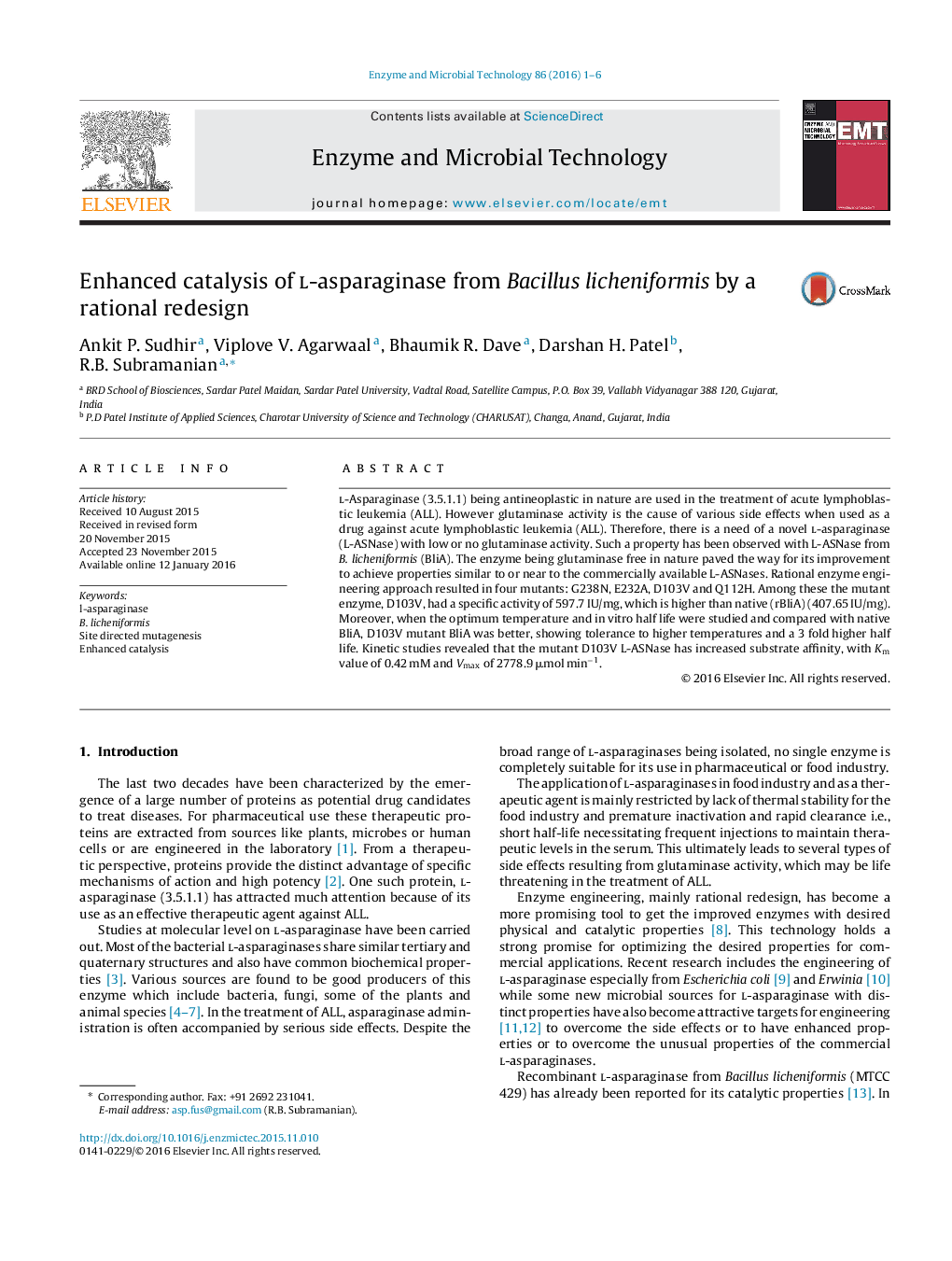| Article ID | Journal | Published Year | Pages | File Type |
|---|---|---|---|---|
| 16791 | Enzyme and Microbial Technology | 2016 | 6 Pages |
•rBliA was modified by site directed mutagenesis using overlap extension method.•Out of 4 mutants obtained, one of the mutant, D103V, revealed specific activity of 597.7 IU/mg which was higher than the rBliA.•The mutant D103V has increased thermal tolerance and half life as compared to rBliA•Kinetic parameters like Km = 0.42 mM and Vmax = 2778.9 μmol min−1 further unveiled the enhanced kinetics of D103V mutant l-asparaginase.
l-Asparaginase (3.5.1.1) being antineoplastic in nature are used in the treatment of acute lymphoblastic leukemia (ALL). However glutaminase activity is the cause of various side effects when used as a drug against acute lymphoblastic leukemia (ALL). Therefore, there is a need of a novel l-asparaginase (L-ASNase) with low or no glutaminase activity. Such a property has been observed with L-ASNase from B. licheniformis (BliA). The enzyme being glutaminase free in nature paved the way for its improvement to achieve properties similar to or near to the commercially available L-ASNases. Rational enzyme engineering approach resulted in four mutants: G238N, E232A, D103V and Q112H. Among these the mutant enzyme, D103V, had a specific activity of 597.7 IU/mg, which is higher than native (rBliA) (407.65 IU/mg). Moreover, when the optimum temperature and in vitro half life were studied and compared with native BliA, D103V mutant BliA was better, showing tolerance to higher temperatures and a 3 fold higher half life. Kinetic studies revealed that the mutant D103V L-ASNase has increased substrate affinity, with Km value of 0.42 mM and Vmax of 2778.9 μmol min−1.
